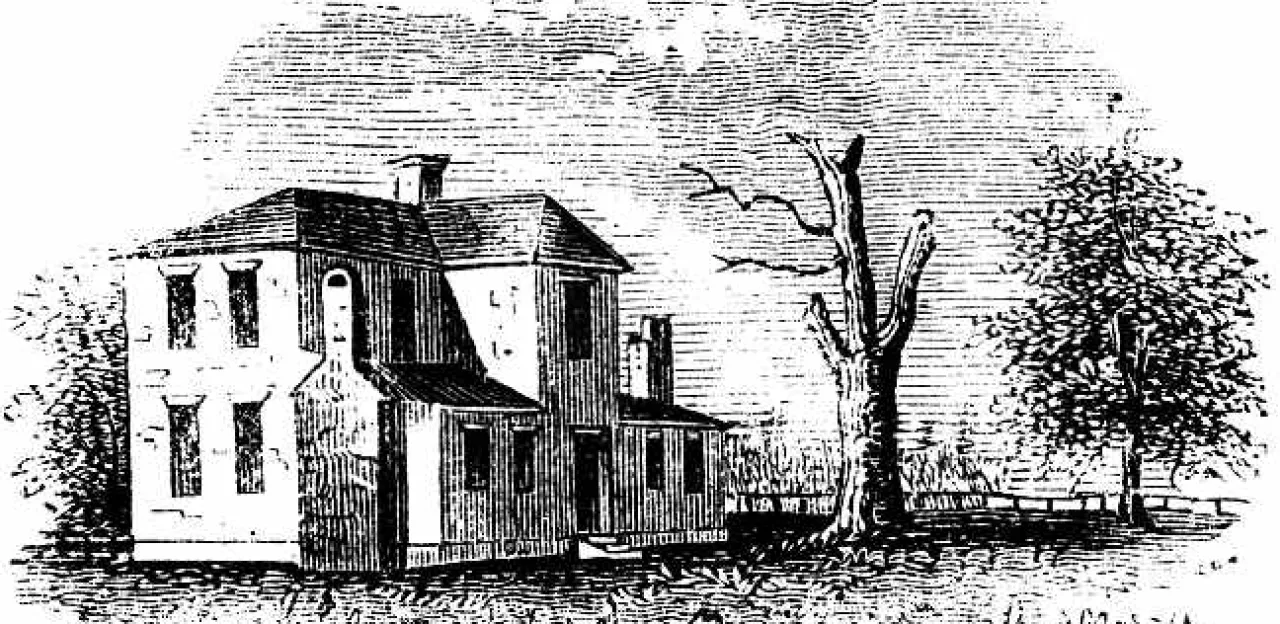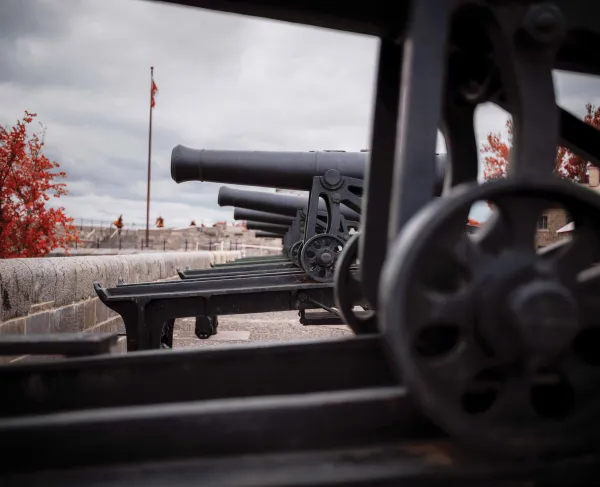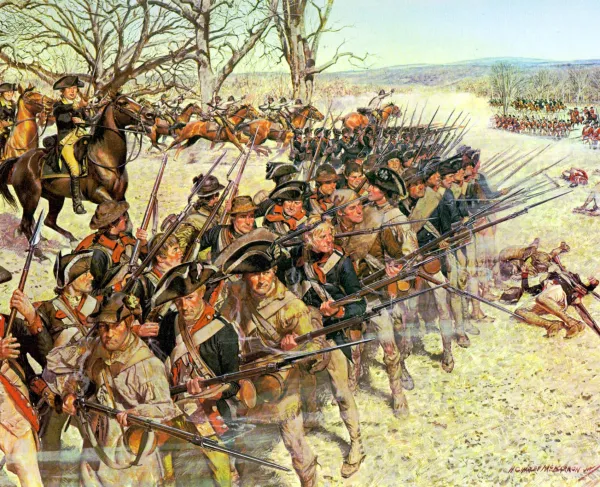Siege of Fort Motte, South Carolina

Unknown to the family who built their homestead at the time, the Mount Joseph Plantation would serve as a pivotal intersection for supply routes during the American Revolution. Situated on the western banks of the Congaree River, the site became valuable for its access to the waterways connected Charleston to the Carolina interior. It would be here, at the site of the plantation house owned by the Motte family, the British would capture, occupy, and hold as a supply depot during the hotly contested fighting in South Carolina.
The homestead that would become known as Fort Motte was originally owned by Miles Brewton, a wealthy slave trader whom perished at sea in 1775 while sailing to Philadelphia to serve as a delegate at the Second Continental Congress. Upon his death, his sister, Rebecca Brewton Motte, inherited a large portion of his estate, including the mansion at Mount Joseph Plantation. Rebecca was wife to Jacob Motte, a local patriot who served at Fort Moultrie in 1776. The family used their resources to help the American Cause. Jacob died of illness in 1780, and Rebecca, who had been living at her late brother’s home in Charleston, was forced to evacuate the city. The British later used this home as their headquarters during the occupation of Charleston. Rebecca and her young family were living at the Mount Joseph Plantation when the British arrived in January 1781. Originally staked out at nearby Belleville Plantation, they now saw an opportunity to seize Mount Joseph and its better access to the Congaree River. The Motte family remained on the plantation, now residing in an old farmhouse.
The plantation’s location proved to be a welcoming opportunity for the British to establish a supply depot on the critical juncture point near McCord’s Ferry for the convoys moving supplies up from Charleston to Camden. The British had 80 regulars from the 84th Regiment of Foot under the command of Lieutenant Donald McPherson, along with a troop of 59 Hessian dragoons, 45 Loyalist militia and a single field piece, garrisoned the mansion situated atop the 245 foot Buckhead Hill. It soon became known as Fort Motte. Opposite Buckhead Hill stood a smaller slope with the farmhouse occupied by Mrs. Motte. The British surrounded the structure with abatis, a deep ditch, palisades and a wooden parapet. Two blockhouses covered the flanks.
The Americans took interest in Fort Motte as Major General Nathanael Greene shifted his focus away from British General Lord Cornwallis for a moment, and saw opportunity in South Carolina and Georgia. Greene had just lost Guilford Court House to Cornwallis in March 1781, and for a time remained committed to shadowing the enemy army as it limped through North Carolina. Lt. Colonel Henry Lee was tasked with keeping an eye on Cornwallis as Greene moved his main forces back into South Carolina with the intention of retaking the area from British control. With Cornwallis in no condition to return — and instead making way for Virginia to link up with the promise of reinforcements there — Greene now saw opportunity. He ordered Lee, with a force of about three hundred light infantry, cavalry, and a field piece, to return to South Carolina and link with Brigadier General Francis Marion and his militia force. After a string of successful attacks on British posts, they turned their attention to Fort Motte, arriving on May 7.
Only four hours after British Captain Neil Campbell’s supply convoy had arrived on May 8, Marion, along with Lee and Major Pinketham Eaton’s 1st Regiment of North Carolina Continentals, began their siege operations. Lee, equipped with a 6-pounder cannon, positioned it to fire just over the defensive works while his Legion occupied the ground around the farmhouse. He instructed a party of soldiers and slaves from local plantations, working in four-hour relays, to dig a zig-zag trench towards the fort’s abatis at a distance of four hundred yards. The vale between the two hills admitted some safety. Once completed on the 10th, Lee summoned British Lt. McPherson demanding surrender. McPherson declined and continued to defend the fort, hoping that a relief column from Camden would come in his aid. He wasn’t wrong to assume reinforcements were close by.
British General Lord Rawdon’s forces were returning through the South Carolina country, having won a victory at Hobkirk's Hill on April 25, and evacuated Camden on May 10; by nightfall on May 11, his army’s campfires could be seen in the northeast distant High Hills of the Santee by the defenders of Fort Motte. While the British presence within South Carolina outnumbered Greene’s forces, Rawdon presided over no more than ten garrisons that were thinly stretched throughout the state. And without Cornwallis readily near to assist, the British would have to retain these posts in a hostile country. Marion calculated that Rawdon would be able to reach Fort Motte within forty-eight hours. The British troops cheered the sight of Rawdon on the horizon. Since McPherson’s refusal to surrender meant they were running out of time before Rawdon arrived, Marion or Lee (accounts differ on who) approached Mrs. Rebecca Motte with a drastic request. They wanted to know if she would let them burn down her home, effectively destroying the supply depot. Mrs. Motte, still the patriot at heart, readily agreed.
Lee wrote, “Orders were instantly issued to prepare bows and arrows, with missive combustible matter.” Waiting until noon when the wood roof had become hot and dry, Lee ordered the house to be set on fire. What happened next is debated by historians. Some, including Lee in his memoirs, claim that Mrs. Motte lent Lee and Marion a bow and “African arrows.” Another account states that muskets fired the “African arrows” onto the roof. According to William Dobein James, who was present, “The house was not burnt, nor was it fired by an arrow from an African bow. Nathan Savage, a private in Marion’s brigade, made up a ball of rosin and brimstone, to which he set fire, slung it on the roof of the house.” Modern archaeological evidence suggests ramrods shaped like “arrows” were fired at the fort. Whatever the method that was used, the roof caught fire. McPherson immediately sent troops scrambling up the roof to rip off the burning shingles. Captain Finley fired upon the British defenders with grapeshot from Lee’s 6-pounder and the troops jumped away from the burning house. Soon, McPherson raised the white flag in capitulation. At the sight of the British dropping their arms to the ground, Marion sent everyone to the house to help put the fire out. The Americans then destroyed the surrounding fortifications. Fort Motte had been taken with only two American losses.
Despite these continued successes, tensions had been building between the militia under Marion and the regulars under Greene and Lee. Marion had threatened to resign prior to the siege because he thought Greene had slighted him on matters of logistics. News had trickled into camp the day Marion arrived at Fort Motte that a militia colonel had been murdered by Tories in North Carolina. Marion wanted to avenge his death, but could not leave Fort Motte. Then, he received a letter from Greene asking why he would not send horses to the main army. Apparently, Lee had told Greene in a prior letter that Marion had plenty of horses and was keeping the best for his own men. What neither Greene nor Lee may have considered was that Marion wanted these horses for his men in order for them to be as effective as they were. Marion responded with his intentions to resign or request a transfer to the Northern theatre. Realizing his blunder, Greene apologized for any slight towards Marion — someone Greene could not afford to lose in the field. Marion only had a force of 150 mounted militia, and desertions were a problem before news of these requests spread through the American camp. Friction between the Continentals and Marion’s militia was evident when the British marched out to surrender Fort Motte. Lee accepted the surrender of the British regulars and Hessians and Marion accepted the surrender of the Loyalist militia. Further tensions boiled over the night of the surrender while both American and British officers dined at the farmhouse table of Mrs. Rebecca Motte. Cornet William Butler Harrison, one of Lee’s men, ordered three loyalists hanged. McPherson was seated among Marion and Lee when receiving the news. Marion abruptly left the house and found two of the loyalists dead and a third hanging from a noose. He had the man cut down, and promptly threatened the Americans present that he was the commanding officer, and would kill the next soldier who harmed a prisoner. Thus this affair nearly ruined what eyewitnesses remarked were “smiles and cheerful chat” among the Americans and British captives.
Greene reported to the Continental Congress Marion and his militia deserved great credit in the reduction of this exceedingly strong post. Lee’s Legion and the detachments serving with him under Major Pinkertham Eaton, Captains Ebenezer Finley of the artillery, and Edward Oldham and John Smith of the infantry “were indefatigable in prosecuting the Siege.” Their firing of the fort had produced one carronade, 140 stands of arms, salt, provisions, and other stores. Greene, obsessed with the reduction of British strongholds in South Carolina, continued to attack British supply posts at Augusta and Ninety Six in the weeks ahead.
The burnt mansion at Mount Joseph Plantation was not reoccupied by the Motte family. Today, the site of Fort Motte along the Congaree River has long since been lost to time, though the grounds are recognized by the National Register of Historic Places. Using modern GPS, one can distinguish Buckhead Hill and the open low hills where the siege occurred. A town using the name Fort Motte became established and briefly thrived with railroad access and a post office into the twentieth century until the installation of Highway 26 and the nearby town of St. Matthews caused much of the town to be abandoned. Our knowledge and understanding of the American attack against Fort Motte shows us that the British garrisons and supply chains remained a noticable presence within the South Carolina countryside, and their removal was paramount to combating London's 'southern strategy' with the American version, i.e. removing the British army from the United States of America entirely. Examples like Fort Motte help us see what military leaders like Nathanael Greene, Francis Marion, and Henry Lee saw in the uncertain days of 1781.
Related Battles
270
258





